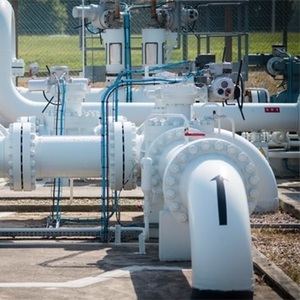Neste enables transport of renewable diesel by pipeline in Europe

April 12, 2022
BY Neste Corp.
Neste, Altens and TRAPIL have collaborated to enable the first-ever transport of renewable diesel (often also referred to as “HVO100”) by a pipeline in Europe. With a pipeline transport, the greenhouse gas emissions were reduced by 92 percent compared to conventional logistics by tanker trucks. The fuel transport of Neste-produced renewable diesel took place on March 28, 2022, between the harbor in Le Havre, located in northwestern France, and Gennevilliers, close to Paris. This made large volumes of renewable diesel available widely in the region, also in big cities such as Paris.
Altogether 3.5 million liters of Neste-produced renewable diesel was transported by TRAPIL via the pipeline to the depot in Gennevilliers, where Altens stores its products for the region. The distance between Le Havre and Gennevilliers is 192 km via the pipeline. The delivery took less than 48 hours to complete and replaced 110 truck deliveries. The pipeline transport of renewable diesel provides a lower-emission alternative to fuel logistics.
.
"The use of a pipeline in fuel logistics allows us to ensure the emissions from fuel logistics remain as low as possible. It also plays an essential role in the security of supply, and the greenhouse gas emissions are 35 percent smaller when compared with transports with electrified rail," says President Mohamed Bennama at Altens.
"We are very happy about this partnership enabling renewable diesel to be transported via pipeline for the first time in Europe. We share the common ambitions with Altens and TRAPIL, with which we were now able to take another step forward in our efforts to reduce the road transport emissions in France," says Peter Zonneveld, Vice President Sales Renewable Road Transportation Europe and APAC at Neste.
Renewable diesel, also known as HVO100
Neste MY Renewable Diesel is produced from 100 precent renewable raw materials. It helps reduce greenhouse gas (GHG) emissions by 90 percent* on the average when emissions over the fuel's life cycle are compared with fossil diesel. The renewable diesel is a “drop-in” fuel, fully compatible with all diesel engines, not requiring any modifications to the existing vehicles or fuel distribution infrastructures.
*) The methodology for calculating life cycle emissions and emissions reduction complies with the European Union’s Renewable Energy Directive II (2018/2001/EU)
Advertisement
Advertisement
Related Stories
CountryMark on July 22 celebrated the completion of more than $100 million in upgrades at its refinery in Indiana, including those related to soybean oil storage. The facility produces renewable diesel via coprocessing technology.
ATOBA Energy and Air Moana are partnering to implement scalable solutions for the supply of SAF. The collaboration aims to ensure long-term SAF availability while supporting local initiatives to develop sustainable fuel production in Tahiti.
Neste Corp. on July 24 released second quarter results, reporting record quarterly renewable product sales volumes despite weaker margins. SAF sales were up nearly 80% when compared to the first quarter of 2025.
Valero Energy Corp. on July 24 released second quarter results, reporting a profitable three-month period for its ethanol segment. The renewable diesel segment posted a loss, but the company’s new sustainable aviation fuel (SAF) unit operated well.
The IRS on July 21 published a notice announcing the 2025 calendar-year inflation adjustment factor for the Section 45Z clen fuel production credit. The resulting adjustment boosts maximum the value of the credit by approximately 6%.
Upcoming Events










